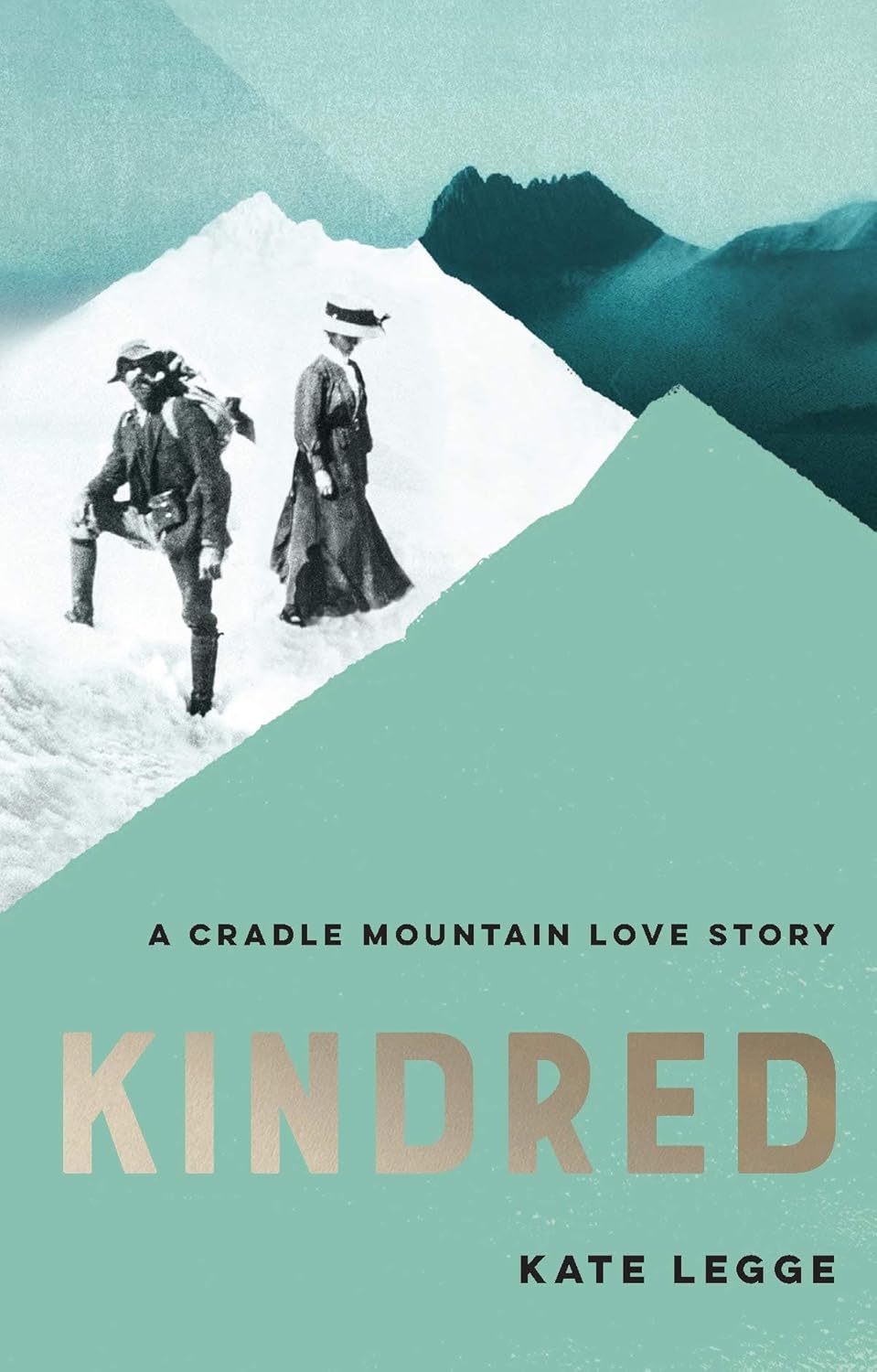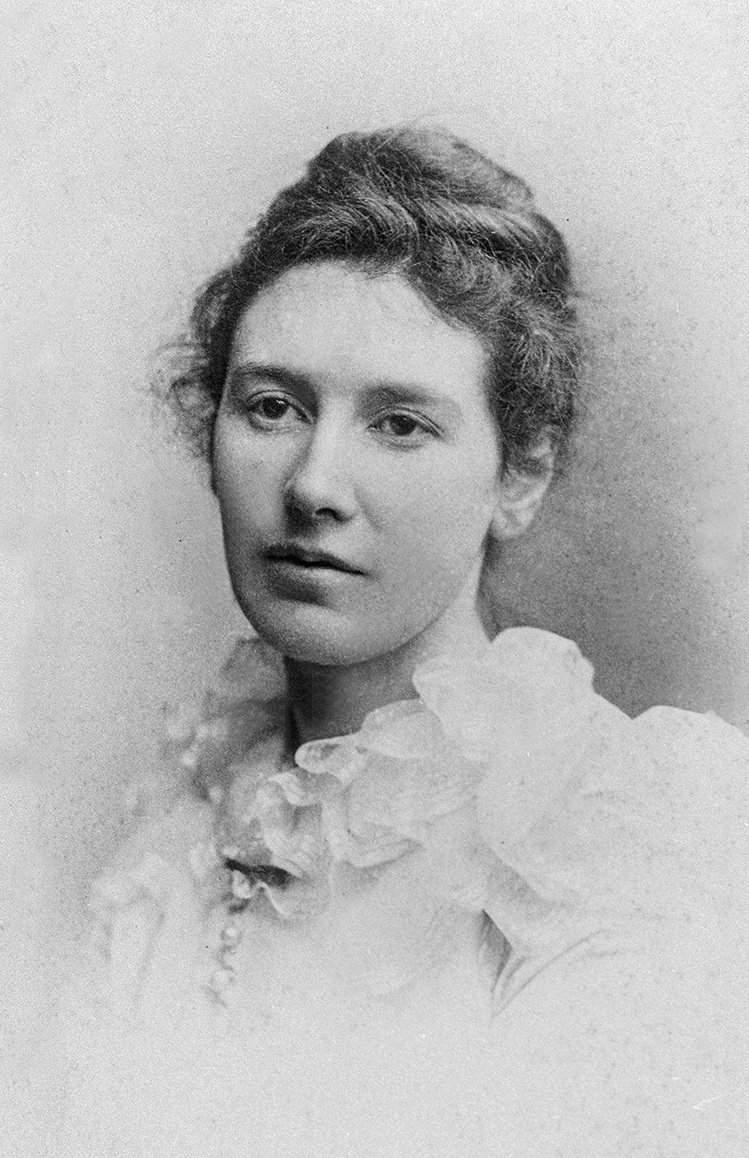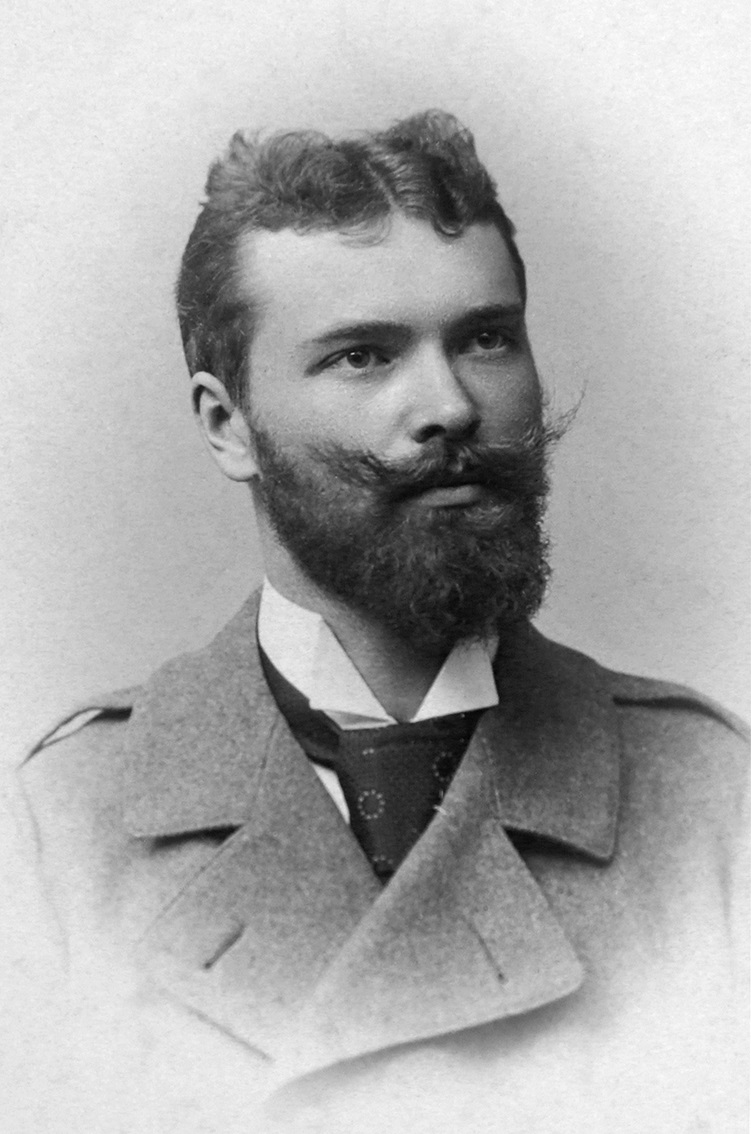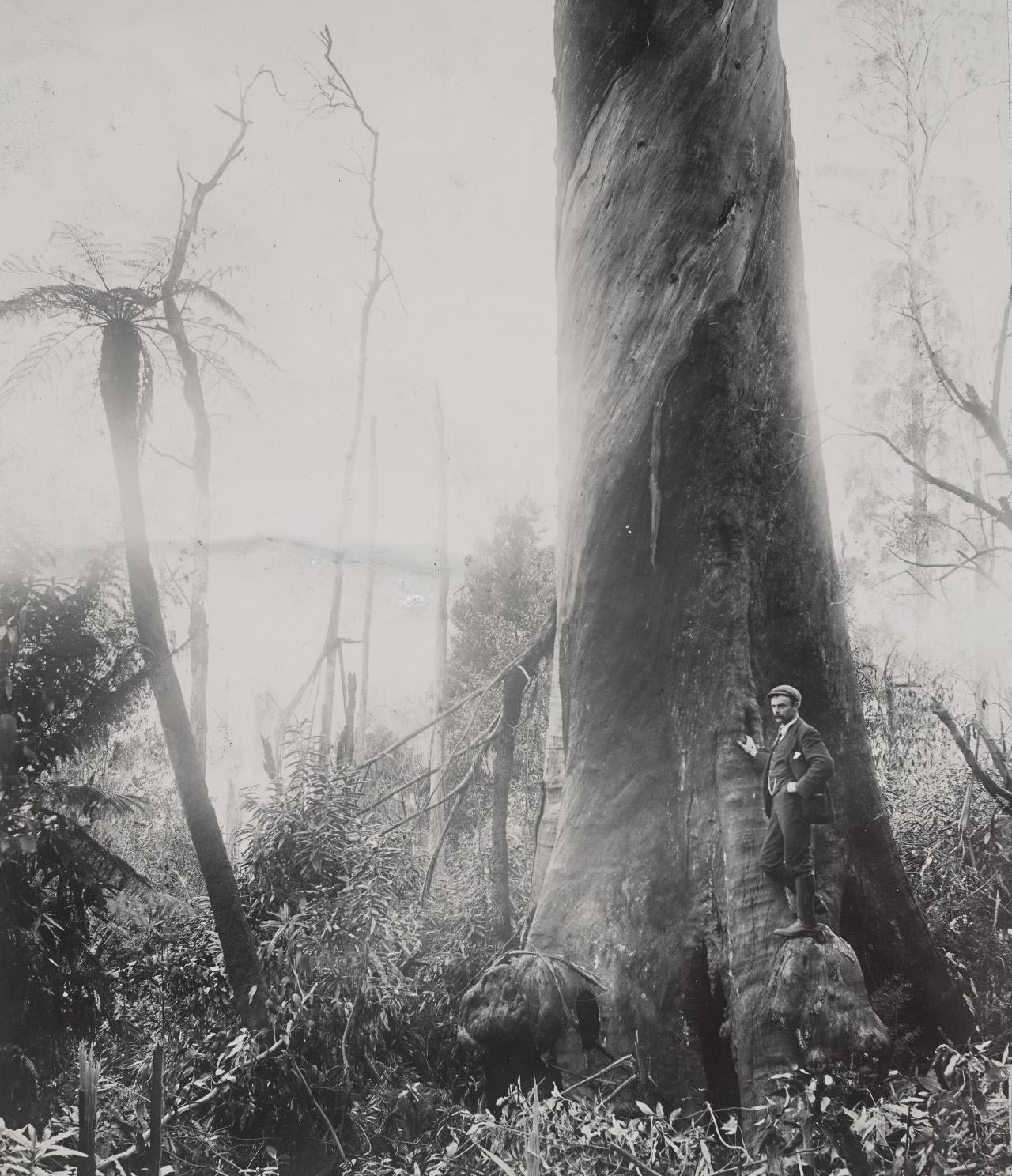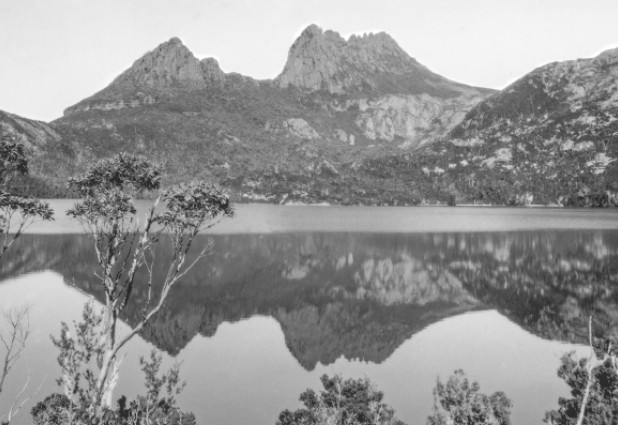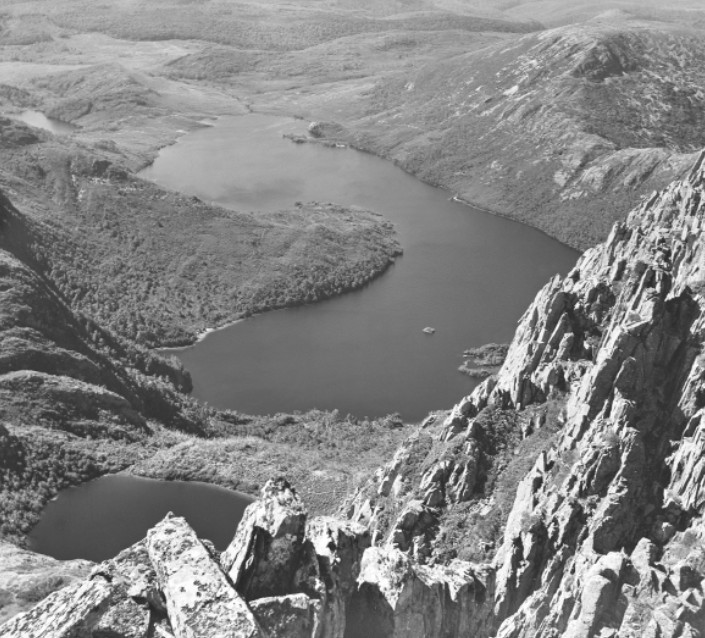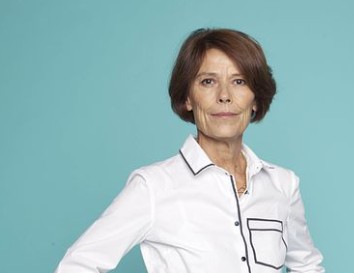In this episode of Biographers in Conversation, award-winning journalist and author Kate Legge chats with Dr Gabriella Kelly-Davies about her choices while crafting Kindred: A Cradle Mountain Love Story, the remarkable love story behind the creation of the Cradle Mountain sanctuary through the characters at its heart.
Kindred
Kindred shares the true story of Gustav Weindorfer, an Austrian immigrant, and Kate Cowle, a Tasmanian mountain-climber, whose shared passion for each other and the wild beauty of Cradle Mountain in Tasmania helped spark Australia’s early conservation movement. Kindred brings to life two remarkable individuals and the rugged landscape they loved.
While Gustav grew up beside the Carinthian Alps, Kate climbed mountains when few women dared. Their honeymoon glimpse of Cradle Mountain lit an urge that filled their waking hours. Others might have kept this splendour to themselves, but Gustav Weindorfer and Kate Cowle sensed the significance of a place they sought to share with the world. When they stood on the peak in the heat of January 1910, they imagined a national park for all.
Kindred: A Hybrid of Biography, Nature Writing and Love Story
Kindred blends historical facts with the emotional depth of a love story in a hybrid of biography, nature writing and love story. This blend feels natural because Gustav Weindorfer and Kate Cowle’s romance was inseparable from their shared love of Tasmania’s Cradle Mountain wilderness. By weaving intimate moments of the couple’s relationship with vivid descriptions of alpine peaks and rainforests, Kate Legge makes the wilderness itself a character. While based on rigorous historical research, Kindred reads like an adventure novel.
Structuring Kindred
Each chapter of Kindred covers a stage of Kate and Gustav’s journey, and the Coda is a personal epilogue describing Legge’s own trek up Cradle Mountain. She walked in her subjects’ footsteps to connect past and present, climbing to the summit as a tribute to the couple’s dream and showing that their story still resonates today.
The result is a memoir told through meticulously crafted vignettes that collectively chart a remarkable journey shaped by war, migration and love. This fragmented structure gives the story a lyrical, almost collage-like quality. Readers might leap from a childhood scene in 1970s Beirut to a reflective passage set decades later, then back again, much as one’s mind darts through memory.
Gustav Weindorfer
Two Lives, Two Perspectives
One challenge in writing Kindred was balancing a joint biography of Kate and Gustav. Legge was careful to give both individuals equal spotlight, interweaving their perspectives so neither overshadows the other. Gustav left a trove of letters and records, whereas Kate’s voice was less visible, so Legge studied archives and diaries to piece together Kate’s story. She was determined to pull Kate out of Gustav’s shadow. ‘I wanted readers to meet Kate not just as Gustav’s wife, but as a trailblazer in her own right’, Legge said. Kindred shows Kate as a fearless mountaineer and equal partner in their cause, a woman decades ahead of her time.
‘Letters Are The Gold’
Bringing History to Life with Novelistic Storytelling
To bring history alive, Legge approached Kindred with a storyteller’s flair. She wrote it with a novelist’s eye, crafting immersive scenes. The narrative opens at dawn on Cradle Mountain, with a young Kate Cowle climbing a peak. Throughout Kindred, Legge paints vivid scenes, so much so the reader feels present in the story and part of the action. These novelistic touches make Kindred engaging and visceral, yet every detail remains grounded in documented fact.
Gustav at Cradle Mountain
The Philosophical and Emotional Depth of Kindred
Writing about Gustav and Kate’s devotion to each other and to nature led Legge to ponder humanity’s relationship with the natural world. The Weindorfers were trying to protect a wilderness long before conservation was mainstream, which invites reflection on our responsibility to the environment. Legge also portrays the highs and lows of their journey: their idealism and spiritual bond with Cradle Mountain, and the heartbreak of not seeing their dream fulfilled in their lifetimes.
Cradle Mountain
Echoes of Today
Legge highlights parallels between the Weindorfers’ time and today. Their crusade to preserve Cradle Mountain foreshadowed the modern environmental movement. Gustav even spoke of keeping it ‘for the people, for all time’. Kate’s life also reflects the present. She defied Edwardian gender norms by insisting on an equal partnership with Gustav. Kindred feels surprisingly relevant, touching on environmental responsibility, women’s agency and the idea of legacy. Neither Kate nor Gustav lived to see Cradle Mountain declared a national park, yet the park exists largely thanks to their vision.
Scenes that Frame the Narrative in Kindred
Legge’s own passion for the story shines through. ‘As a biographer, I think our role is not only to inform, but also to inspire’, she says. She wrote Kindred in a warm, engaging style, letting her fascination with Kate and Gustav shine through. By balancing the rigour of a historian with the warmth of a storyteller, she crafted a biography that reads as grippingly as a novel without sacrificing authenticity.
An updated version of Kindred
In November 2025, an updated edition of Kindred will be released, which includes a new development in Kate and Gustav’s love story. When Kate died in 1916, she was buried in her family’s plot in Devonport, Tasmania, and Gustav, who lived another 16 years, was buried in a tomb in Cradle Valley. On 1 February 2024, Kate’s body was exhumed and cremated, and her ashes were placed with those of her husband.
Kindred: Critical Reviews
‘Kindred is a well-researched blend of personal reflection and historical biography, illuminating the origins of Cradle Mountain National Park.’
Jarrod Hore, Australian Book Review
‘Kate Legge has written the story of Australia’s greatest natural wilderness and the “giants” who brought it to the nation. Kindred is an inspiring biographical account of two conservation trailblazers told with journalistic clarity and heartfelt reverence.’
Anne Henderson The Sydney Institute Review
‘Legge’s achievement in Kindred is to draw the woman out from beneath her husband’s cloak’ and give Kate due credit for her “intelligence and spunk” in matching Gustav’s wilderness exploits.
The Saturday Paper
‘Kindred is affectionate, yet unsentimental. It gives overdue recognition to Kate’s importance in the partnership, showing that Kate matched Gustav in passion and endurance. Kindred celebrates the human spirit in wild places and reminds readers why the Weindorfers’ legacy, their unshakable faith in the restorative power of the wild, is so important.’
Norrie Sanders, Queensland Reviewers Collective
Kindred: Interviews
‘The love story that opened Tasmania’s Cradle Mountain to tourism’
ABC Life Matters, Radio National, 6 March 2019
‘Kindred: An interview with Kate Legge’
Lotsafreshair blog, 27 March 2019
‘Cradle Mountain’s great love story’
ABC Conversations, Radio National, 21 March 2019.
About Kate Legge
Kate Legge writes for The Weekend Australian Magazine. She has covered politics and social affairs in Australia and America. She has published two novels: The Unexpected Elements of Love (long listed for the Miles Franklin Award) and The Marriage Club.




